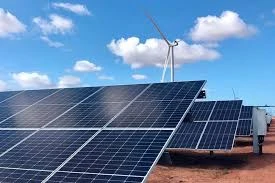Impact of High Temperatures on Solar Panel Efficiency and Performance Analysis
Solar Panel Efficiency at High Temperatures
As the demand for renewable energy sources continues to increase, solar power has emerged as a frontrunner in the quest for sustainable energy solutions. However, one of the crucial factors affecting the efficiency of solar panels is temperature. With many solar installations situated in regions that experience high temperatures, understanding how this affects panel performance is vital for optimizing energy output.
Solar panels are primarily composed of semiconductor materials, which convert sunlight into electricity. The efficiency of these panels is typically rated at standard test conditions (STC), which usually include a temperature of 25 degrees Celsius (77 degrees Fahrenheit). However, when temperatures rise beyond this threshold, the performance of solar panels can significantly decline. This phenomenon is known as the temperature coefficient, which quantifies how much efficiency decreases as temperatures increase.
Solar Panel Efficiency at High Temperatures
High temperatures can affect different types of solar panels in various ways. Monocrystalline panels tend to perform better in high temperatures compared to polycrystalline panels. This is largely due to the material and structural differences; monocrystalline panels are made from a single crystal structure, allowing for better thermal conductivity and less energy loss as temperatures rise. In contrast, polycrystalline panels, which consist of multiple crystal structures, may experience more significant efficiency drops.
solar panel efficiency at high temperatures

In addition to the direct effects of temperature on the photovoltaic (PV) cells, the overall installation setup also plays a critical role in performance. Solar panels are often mounted on rooftops or ground mounts, and their exposure to air can influence their ability to dissipate heat. Proper ventilation and spacing are essential to minimize overheating. For example, installations that allow for airflow beneath the panels can help reduce the temperature and maintain efficiency.
Moreover, innovative technologies are emerging to address the challenges posed by high temperatures. Some manufacturers have developed panels with lower temperature coefficients to mitigate efficiency loss. Bifacial solar panels, which capture sunlight from both sides, also show promise in high-temperature scenarios where reflected sunlight can enhance energy production. Additionally, the use of cooling systems, like water or air cooling, is being explored to improve heat dissipation from solar panels, although these methods add complexity and cost to the system.
The geographical considerations for solar panel installations cannot be overlooked. In regions with consistently high temperatures, careful selection of solar technology is essential. System designers and homeowners must consider local climate conditions when choosing panels, as well as optimization strategies to enhance performance. Regular maintenance, such as cleaning dust and debris from panels, can also help improve efficiency as soiling combined with heat can exacerbate losses.
In conclusion, while high temperatures pose challenges to solar panel efficiency, awareness and innovative approaches can help mitigate these effects. By choosing the right technology, optimizing installation setups, and adopting maintenance best practices, it’s possible to sustain and even enhance solar energy production in warmer climates. As solar technology continues to advance, research and development focused on improving performance in high-temperature scenarios will be crucial in realizing the full potential of solar energy as a reliable, clean energy source for the future.
-
Unlocking Energy Freedom with the Off Grid Solar InverterNewsJun.06,2025
-
Unlock More Solar Power with a High-Efficiency Bifacial Solar PanelNewsJun.06,2025
-
Power Your Future with High-Efficiency Monocrystalline Solar PanelsNewsJun.06,2025
-
Next-Gen Solar Power Starts with Micro Solar InvertersNewsJun.06,2025
-
Harnessing Peak Efficiency with the On Grid Solar InverterNewsJun.06,2025
-
Discover Unmatched Efficiency with the Latest String Solar InverterNewsJun.06,2025







